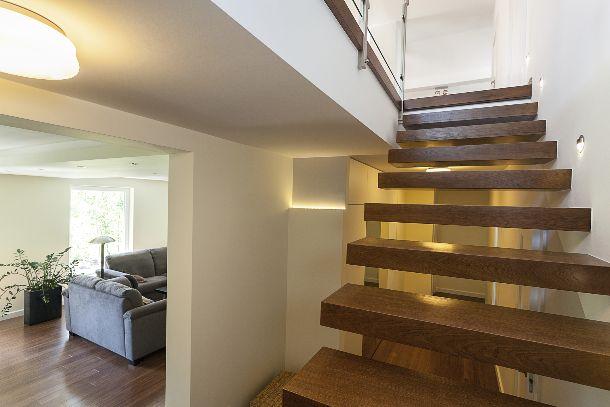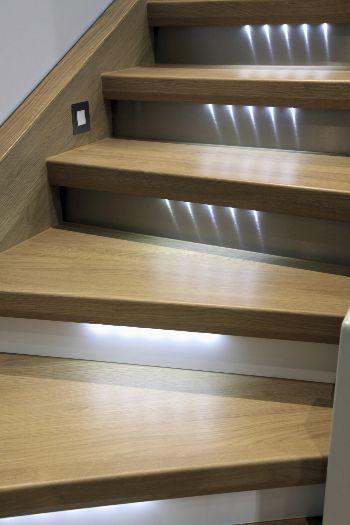Light the stairs
Post from EditorialsIt is very important to design the right lighting in every room of the house. This is even more true for the stairs, especially for safety reasons.
Stairway lighting
We know how important it is to design the right lighting in every room of the house, but this applies more to the stairs, where the choices are not motivated only by aesthetic reasons but mainly by reasons of safety.
Several elements, in fact, help to increase the danger of the stairs, as the height of the steps, slippery surfaces or any objects left lying around carelessly.
This can endanger the users: unsteadily walking elderly people; lively and impetuous children; adults that go up or down in a hurry.
But the study of the stairway lighting is also important for other reasons. A good lighting design helps to enhance this element the same way as all the other rooms of the house, and it avoids to relegate it to the role of a mere place of transit and connection.
Light the stairs with natural light
In analogy to what happens in the rest of the house, even in the design of a staircase we must take care of it receive the greatest possible amount of natural light, so that it can be lit without the ignition of lamps for many hours a day.
Thus maximizing the use of natural light, will obviously reduce the consumption of electrical energy, with benefits for both the environment in general and for the pockets of the consumers.
Light the stairs with artificial light
Artificial lighting is equally important, also in view of the night use of the stairs, not to mention that many internal ramps are not equipped with a window from which the sunlight can penetrate.
A fundamental principle in the design of lighting in general, and in particular for this case, is to take account not of who observes the stairway, but to those who use it.
The lighting, therefore, should not be targeted to make it beautiful to see but to make it safe and practical for those who walk it. First it is necessary to provide a proper position of the light fixtures. In particular, we must provide switches for switching on and off the light to be comfortably reached during ascent and descent.
First it is necessary to provide a proper position of the light fixtures. In particular, we must provide switches for switching on and off the light to be comfortably reached during ascent and descent.
In the market there are different types of lamps that are especially suited to light the stairs.
Some are impressive and contribute to the aesthetic of the structure.
The arrangement of the plants changes depending on the effect to be obtained:
- you can install lights that light directly every single step (these are called pacemaker for which today are widely used LEDs)
- ceiling lamps, whose light expands like a pall on the whole environment
- wall lamps to be placed in correspondence of each ramp.
It is important to use a source of direct illumination, that is, with the light beam oriented directly toward the steps, and is not intended to illuminate the wall.
Very useful can also be the predisposition of adjustable fixtures, it can move so as to not create annoying shadows on the steps.
The applique must be placed at an appropriate height, so as not to obstruct the path of those who pass on the stairs, and in order to avoid glare effects that could make complicated actions of going up and down, particularly if there is a curve, when you might suddenly find yourself a front light.
A distinction, in the choice of the device, must be made depending on the type of stairs.
For a spiral staircase, for example, the best solution is that of a ceiling lamp to shine from above. However, this choice might be problematic for the central part of the scale that will be less illuminated, so one must provide light points along the route.
A solution particularly spectacular and suitable for contemporary stairs is to directly illuminate the inside of the steps, when these are made of transparent materials such as glass or plexiglass.
The choice of the lamps must also take into account the style of the house.
For a classic one, you can choose a unit with opal diffuser that does not show the internal circuitry; for a modern setting you can opt for devices with metal holder, perhaps with colors that recall the rest of the environment.
The tips shown are valid for interior stairs, but they can be applied in a similar manner also to the external ones.
There are in fact lamps specially made for the exterior, able to withstand all weather conditions.
79733 REGISTERED USERS










